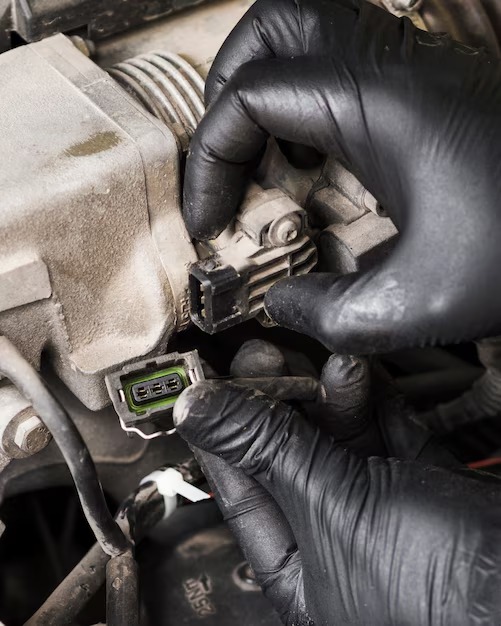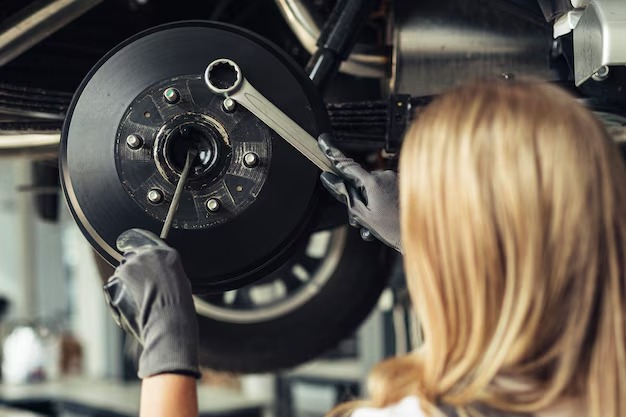Understanding Vehicle Mechanics: How Many Axles Does a Car?
Many of us drive cars daily, whether it’s to work, school, or a trip to the grocery store. However, understanding the intricate mechanics that allow us to travel from point A to point B can be a confusing maze of technical terms and complex systems to the uninitiated. One of these fundamental questions surrounds the central structure of any car: its axles. Just how many axles does a car possess?
This article aims to demystify this important component of vehicle mechanics by examining and explaining the number of axles in typical automobiles. Backed by insights from experts in the automotive field, we unpack the role of axles, how they work within the broader system of a vehicle’s moving parts, and crucially, count the number of axles found in a standard car.
In understanding the nuts and bolts of how a car operates, we don’t simply gain knowledge. We become better drivers, more informed consumers and more responsible vehicle owners. Whether you’re revving up for a road trip, considering a new car purchase, or simply curious about how your reliable four-wheeled transport works, grasping the basics of auto mechanics like the number of axles in a vehicle is key.
Interpreting Essential Terminology: What Exactly is an Axle?
When delving into the intricate world of vehicle mechanics, one has to understand a fundamental structural component: the axle. This term refers to the rod or shaft that links the rotating wheel pairs in a vehicle. Not just serving as a connection point for wheels, the axle also bears the entire weight of the car, passengers, and any additional load. Essentially, the axle plays a critical role in the overall vehicle dynamics, including steering, braking, and driving.
In terms of types, there are two main varieties of axles. The drive axle is equipped with differential gears that enable the wheels to rotate at different speeds. This is particularly crucial when the vehicle is making a turn. On the other hand, a dead axle, also known as a lazy axle, merely supports the weight and doesn’t participate in transmitting the driving forces.
The understanding of axles doesn’t stop at knowing their basic function and types. Another essential characteristic to consider is the number of axles in a vehicle, which often varies depending on the type and size of the vehicle. For instance, a standard passenger car usually has two axles.
Understanding the axles’ concept deepens your knowledge about your vehicle’s working, which can prove beneficial in performing essential car maintenance and troubleshooting exercises.
The Role of Axles in the Dynamics of Vehicles
Recognizing the part that axles play in the performance of cars is crucial in understanding vehicular mechanics. Primarily, axles have a couple of significant roles that ensure the smooth operation of a car.
Load-Bearing Role of Axles
First, axles bear the entire load of the car, including the car’s mass, the passengers, and any extra load from goods and luggage. The metal rod that connects the two front wheels or the two rear wheels is engineered to handle the weight of the vehicle. Thus, the ability of a car to carry heavy loads and maintain its balance depends largely on the strength and condition of its axles.
Axles’ part in Transmitting Power
Secondly, axles are instrumental in transmitting power from the engine to the wheels. Cars predominantly utilize a front-engine, front-wheel-drive layout whereby the front axle is connected to the engine through the transmission. When the engine runs, it sends power to the front axle, which subsequently rotates the front wheels. As such, in the absence of axles, the engine’s power would essentially be unutilized because it wouldn’t reach the wheels of the car.
Axles contribution to Steering and Movement
Last but not least, axles aid in steering the vehicle. When a driver turns the steering wheel, the front axle pivots to direct the car’s wheels towards the desired path. The front wheels turn on the axle, allowing them to change direction. The rear axle, meanwhile, remains static to ensure that the car moves smoothly without wobbling or veering off course. Therefore, axles have an indispensable part in ensuring a car’s directional stability and maneuverability.
In conclusion, axles play a role in various critical functions in a car’s mechanism such as bearing loads, transmitting power from the engine to the wheels, and aiding in vehicle steering. Any defect in the axle could significantly impair the performance and safety of the car, making it crucial to ensure their regular maintenance and inspection.
Understanding Axles: Differentiating Between Drive and Non-Drive Varieties
The complexities of vehicle mechanics extend beyond the commonly understood components such as the engine and wheels. The axles, for instance, play a crucial, yet oft-underappreciated role in enhancing a vehicle’s performance. Understanding the classification of axles, specifically, the dissimilarities between drive and non-drive axles, is essential in gaining a holistic knowledge of automobile mechanics.
What is a Drive Axle?
A significant element within the drivetrain system, a drive axle is positioned centrally amid a vehicle’s wheels. Unlike its non-drive counterpart, it is connected directly to the engine through the driveshaft. As a result, it receives power directly from the engine, transmitting it to the wheels, thereby facilitating motion. In essence, drive axles are pivotal to a car’s propulsion system.
What is a Non-Drive Axle?
Conversely, a non-drive axle does not receive power directly from the engine. It is strategically mounted either at the front or the back of the vehicle, supporting it without aiding propulsion. The non-drive axle holds the weight of the car and its passengers, adding stability and balance while also providing a basis for the wheel assembly and suspension system.
- The Drive Axle: Performs a central role in transferring power from the engine to the wheels, enabling propulsion. It can be viewed as the core of the vehicle’s movement capabilities.
- The Non-Drive Axle: Holds the weight of the car, contributing significantly to its balance and stability. It is a crucial component for the wheel assembly and suspension system but does not influence the drive mechanism.
Understanding the distinctive roles and responsibilities of drive and non-drive axles can help identify mechanical issues and improve a vehicle’s overall performance. A well-maintained axle system ensures a smooth and safe ride, reducing wear and tear on your car.
The Impact of Axles on Car Performance
A car’s performance is influenced by many factors, one of which is its axle arrangement. The axle is a key component of a vehicle’s drive system, playing a pivotal role in improving its efficiency.
The efficiency of an automotive vehicle is affected by the count and configuration of the axles. Generally, the more axles a car has, the higher its load capacity and the better it can distribute weight. This is especially useful in heavy vehicles such as trucks and buses.
On the other hand, the positioning of the axles also directly influences the vehicle’s efficiency. For instance, vehicles with rear axles are excellent for heavy loads and towing, while those with front axles are more fuel-efficient and provide better steering traction.
- Front Axle Drive: Front axle drive vehicles are more fuel-efficient with better steering traction, making them ideal for regular city cars.
- Rear Axle Drive: Rear axle drive vehicles are suitable for heavy loads and towing, often seen in trucks and larger vehicles.
- All-Wheel Drive: In an all-wheel-drive vehicle, power is divided among all axles, increasing the vehicle’s overall efficiency and performance even in challenging conditions.
Axles in a car’s design significantly contribute to its overall efficacy. Multiple axles enhance load capacity, while the arrangement of axles can enhance fuel efficiency and performance under different conditions. Thus, understanding the role of axles is crucial when optimizing for vehicle performance or making informed choices when buying a car.
Understanding the Number of Axles in Your Vehicle and Their Importance
Many people might not consider what lies beneath the body of their vehicle. However, gaining a basic knowledge of your automobile’s undercarriage, especially the number of axles, can aid in better vehicle comprehension and maintenance. A common question is: How many axles does my automobile possess?
The Simple Answer
The vast majority of standard personal cars, such as sedans, coupes, and compact cars, have two axles. Commercial vehicles, larger trucks or SUVs, may have more than two depending on their size and purpose.
Functions of Axles in Cars
The importance of axles in vehicle operation cannot be overstated. They bear the entire weight of your vehicle, passengers, and cargo load. Moreover, the axles are crucial for car acceleration and provide stability and balance while driving.
Type of Axles in a Car
Consequently, the quantity of axles your vehicle has can vary depending on the axle types. In standard cars, there are typically two kinds of axles:
- Drive Axles: These axles are connected to the engine via the transmission and they are responsible for providing power to the wheels enabling the vehicle to move.
- Dead Axles: Often found in rear-wheel drive vehicles, these axles are not connected to the engine and they don’t provide power to the wheels. Their function is to bear the weight of the vehicle and assist in stability.
In conclusion, understanding the layout and role of your vehicle’s axles can not only improve your knowledge of how your car works but also assist in diagnosing potential problems and maintaining it’s optimum performance.
Amplified Strength and Stability: The Perks of Vehicles with Numerous Axles
Motor vehicles come in various forms, each having its unique attributes that make it an ideal fit for specific situations. One of these unique features is the number of axles a vehicle possesses. In understanding a car’s mechanics, the amount of axles it possesses is an essential detail.
When one ponders about the typical passenger vehicle, they usually think of a four-wheeled car, therefore considering it to possess two axles. This configuration is prevalent and indeed works perfectly well for most situations. However, vehicles with more axles come with certain advantages that you can’t find in their two-axle counterparts.
The Advantages of Additional Axles
An immediate benefit of having more axles is the distribution of a vehicle’s weight. Vehicles with a higher quantity of axles have their weight more evenly spread. This increased equilibrium provides not only more stability, but also reduces the pressure on each individual tyre – resulting in less wear and tear.
Secondly, there are the benefits linked to power. Simply put, the more axles a vehicle has, the more power it can potentially deliver. This makes multi-axle vehicles a mainstay in industries where heavy loads need to be transported, like in construction or logistics.
- Greater Traction and Control: Multi-axle vehicles can tame rough and tough terrains with their increased traction and control, thanks to more tyres making contact with the ground.
- Increased Load Capacity: With the weight distributed over more axles and tyres, these vehicles can carry significant weight without hampering the vehicle’s performance.
- Increased Power: With more axles, the power derived from the engine can be distributed more, hence resulting in improved efficiency and power.
However, it’s worth noting that while multiple axles deliver numerous advantages, they also bring added complexity to a vehicle’s maintenance and can potentially incur more costs in the long run. It’s always crucial to consider these factors before deciding if a multi-axle vehicle is the right fit for your needs.
In conclusion, multiple axles can significantly improve a vehicle’s weight distribution, power, and overall performance, making them a popular choice for heavy-duty applications.
Examining the Number of Axles in Typical Vehicles and Trucks
Let’s delve into a practical analysis of the amount of axles that can be found on frequently seen cars and pickups by exploring different car categories. The axle is a crucial part of the vehicle’s framework that bears the weight of the car and ensures the proper functionality of the wheels. An in-depth understanding of these mechanical components will help you better comprehend vehicle performance.
Standard Passenger Cars and SUVs
The bulk of standard passenger cars, from compact models like hatchbacks to larger models such as sport utility vehicles, usually sports two axles. The front axle is primarily responsible for steering and absorbing shocks from the road, while the rear axle is designed to bear the torque transferred from the engine through the vehicle’s drive train.
Pickup Trucks and Larger Commercial Vehicles
On the other hand, pickup trucks and larger commercial vehicles may have a greater quantity of axles. Many light-duty pickup trucks still use a two-axle setup. However, commercial trucks and buses, to manage heavier loads, often feature more axles. The total number varies based on the vehicle’s purpose and the applicable federal and state regulations.
Note: In several jurisdictions, the axle count can affect road taxes and toll rates, providing an economic incentive for intelligent vehicle design.
Unique Cases and Specialty Vehicles
There are also vehicles with unique axle configurations. For example, some all-wheel-drive sports cars feature a ‘third’ axle used for power transfer, technically making them three-axle vehicles. Another good example is articulated buses and semitrailers, which often feature flexible joint connections between sections, resulting in additional axles.
To Recap:
- Most standard passenger cars and SUVs have two axles.
- Commercial vehicles and buses often have more than two axles.
- Unique axle configurations can exist in specialty vehicles, such as certain sports cars and articulated buses.
Understanding the number of axles on a car and their functions greatly contribute to your grasp of automotive mechanics.
The Function of Axle Structures in Automobile Load Support and Grip
The axle mechanisms executed in automobiles play critical functions in vehicle endurance and command. They perform dual roles – supporting the vehicle’s weight (load bearing) and maintaining connectivity between the car and the road (traction).
The Load Bearing Function of Axle Structures in Automobiles
The axle structures in a vehicle markedly contribute towards its load-bearing feature. Compounded by the car framework and the sum of any passengers or cargo, the car’s weight is uniformly disseminated through the suspension system to the axles. Hence, axle construction and capacity dictate the total load a vehicle can endure.
Typically, the number of axles in a car exhibits potential load capacity: more axles imply a higher load-bearing quantity. Commercial vehicles such as trucks and buses often have more than two axles to augment their load-bearing capacity. In contrast, passenger vehicles typically have two axles due to their relatively lower load requirements.
The Traction Function of Axle Structures in Automobiles
Traction is another crucial aspect held by the axle structures. In the conversion from engine power to motive power, the axles play an indispensable role. They connect the driving wheels with the powertrain, helping in the transmission of torque to the wheels, thereby developing traction and enabling the vehicle to move. Essentially, axle structures dictate the drive wheels: a front axle facilitates front-wheel drive, a rear axle powers rear-wheel drive, and an all-wheel drive involves both axles.
Furthermore, axles are key to the braking system: applying brakes causes friction between the tires and the road surface, and this friction must be adequately conveyed to stop the vehicle safely. In this process, axles ensure the necessary force transmission.
In summary, axle structures serve as pivotal parts of the vehicle mechanics. Their essential functions in load bearing and traction significantly influence the performance, capacities, and safety of the vehicle.
The Influence of Vehicle Axles on Safety
The axles of a car play a crucial role in maintaining safety on the road. Understanding how axles operate and how many a car has is vital to fully grasp their impact on vehicle safety. Here, we’ll discuss the main ways in which axles contribute to the safe operation of a vehicle.
The Role of Axles in Handling and Stability
Axles, the spinning rods situated between the wheels of a car, bear the load of the vehicle while also facilitating wheel rotation. The position and number of axles help determine a car’s handling capabilities. Specifically, they influence the car’s balance, weight distribution, and stability, all of which are essential in maintaining control and preventing accidents.
Front axles carry the load of the engine and absorb shocks from the road. Having sturdy front axles ensures good handling, especially in front-wheel drive cars where the axles are not just supporting the weight but also delivering power to the wheels. Meanwhile, rear axles share the load of the vehicle and help maintain stability when turning. For rear-wheel drive cars, these axles also deliver power to the wheels, improving traction and stability.
Axles and Brake Performance
Braking efficiency is another crucial safety aspect influenced by axles. The axles transmit the force created by applying the brakes to the wheels. So, a vehicle with well-maintained axles will have better braking performance, reducing the risk of accidents. It’s important to remember that worn-out or damaged axles can significantly impact this, potentially leading to brake failure.
Conclusion
To sum up, the axles of a car play a key role in determining its safety feature. They are crucial in maintaining stability, handling, and braking efficiency. Regular checks and maintenance are thus essential to ensure the axles can function optimally, thereby promoting vehicle safety at all times.
A Comparative Examination of Powered versus Non-Powered Axles
The complexities of vehicle mechanics present a diverse array of components, each with different functions. Among these are powered and non-powered axles. Here’s a comparative analysis of both:
Powered Axles
A powered axle, otherwise referred to as a drive axle, is specially designed to generate torque and power to the vehicle’s wheels. Fundamentally located beneath the engine, this axle can be found in either the front, rear, or both ends of a vehicle, particularly depending on the drive system implemented – whether front-wheel, rear-wheel, or all-wheel drive.
The drive axle is characterized by a differential mechanism, allowing it to rotate the wheels at varied speeds, specifically while performing turns. Since the outer wheels travel a longer path than the inside wheels during a turn, the differential makes it possible to balance out this difference, ensuring smooth and efficient manoeuvering.
Non-Powered Axles
Contrarily, a non-powered axle, also known as a ‘dead’ axle, serves a markedly different purpose. While it doesn’t deliver power to the wheels, its function is to bear the weight of the vehicle and ensure stability.
Quite often, non-powered axles are located at the rear of vehicles such as large trucks or tractor trailers, supplying stability for heavy loads. Lightweight vehicles like racing cars, on the other hand, might have these axles at the front to boost handling capability during high-speed manoeuvres.
Thus, while both powered and non-powered axles fundamentally sustain vehicle weight, the former plays a critical part in the vehicle’s overall performance by powering wheels, whereas the latter mainly offers structural support.
- Powered axles: Offer power and torque to wheels; found in various vehicle types; typically positioned beneath the engine; characterized by a differential mechanism.
- Non-powered axles: Primarily bear vehicle weight; offer stability; usually located at the rear of large vehicles or the front of lightweight, high-speed vehicles.
Taking Care of your Vehicle’s Rotation Shafts
Your vehicle’s rotation shafts, also known as axles, play an important role in driving, braking, and carrying the load of your vehicle. Understanding how to properly maintain these components can extend their lifespan and improve your car’s overall performance. Here are some pointers on maintaining your vehicle’s rotation shafts:
Regular Inspection and Servicing
One of the key steps towards maintaining car axles is having regular check-ups. Axles, like all vehicle components, are subject to wear and tear and need frequent inspections to keep them in top condition. Mechanics can spot early signs of axle trouble, such as worn out joints or leaking boots, avoiding potential breakdowns, and costly repairs down the line.
Lubricate
Just like other moving parts of your car, axles need lubrication to minimize friction and wear. Regular axle lubrication can increase the lifespan of these components, improve the car’s performance, and give you a smoother ride. Remember to only use high-quality lubricants that are recommended by your car’s manufacturer.
Weight Capacity
Another important factor to consider is the weight your vehicle carries. Overloading your vehicle regularly can damage the axles and other suspension components. Respect the weight capacity indicated by the manufacturer to avoid unnecessary stress on your axles.
Driving Habits
Your driving habits can also greatly affect the durability of your car’s rotation shafts. Avoid driving on rough terrains or potholes, as these can cause a serious strain on the axles and other suspension components. Drive at a moderate speed and avoid hard brakes and sharp turns when possible.
Maintaining your vehicle’s axles might seem like small adjustments to your normal routine, but these little steps can add years to your car’s operational lifespan. It’s always better to prevent a problem than to deal with its aftermath.
Core Concepts: Deciphering the Role of Axles in Automative Mechanics
In vehicle mechanics, understanding the role of axles is essential. The axle is a fundamental part of any vehicle, playing a crucial role in the optimal functioning of the car. It plays a dual role, supporting the weight of the vehicle and aiding in driving. If you think about the vehicle’s structure as the human body, the axles are the equivalent of the skeleton, giving the car its shape and strength, and the wheels are attached to it, similar to how our feet are attached to our legs.
Axles have a direct impact on a vehicle’s performance, safety, and stability. Faulty axles can lead to decreased handling and braking abilities, as well as increased tire wear. Therefore, maintaining and checking the condition of the axles is critical for overall vehicle performance.
Every car is unique, and thus the number of axles is not the same across all vehicles. For a regular passenger car, there are typically two axles. However, the number of axles can vary depending on the type of vehicle, with buses and large trucks having more than two axles for additional support and stability.
Different Types of Axles
There are various types of axles, each designed for different types of vehicles and uses. These can be categorized as:
- Live Axles: These are used mainly for rear-wheel drive vehicles, and they allow the wheels to rotate with the axle.
- Dead Axles: Unlike live axles, these do not rotate and are used mainly to support the weight of the front of the vehicle.
- Tandem Axles: These are a group of two or more axles that are positioned close to each other to bear heavier loads, usually found in large vehicles such as buses or trucks.
- Steering Axles: These are found in front-wheel drive vehicles and allow the wheels to rotate to control the vehicle’s direction.
In conclusion, understanding the role and importance of axles in vehicle mechanics is key to keeping a vehicle running smoothly and optimizing its performance. Clear knowledge of how axles work can help in diagnosing problems, servicing, and maintaining a vehicle.
FAQ: How many axles are on a car
What is the role of an axle in a vehicle’s mechanics?
An axle is a central shaft for a rotating wheel or gear. It serves the crucial role of bearing the weight of the vehicle as well as any cargo, passengers, and the forces created by acceleration and braking. It also helps to keep the wheels of the vehicle in alignment.
Are there different types of axles in vehicle mechanics?
Yes, there are two main types known as drive axles and dead axles. Drive axles are connected to the drivetrain and provide power to the wheels, while dead axles, also called lazy axles, are not attached to the engine and do not provide drive power.
What happens if an axle is damaged or broken?
If an axle is broken or severely damaged, the vehicle will not be able to operate safely. Common symptoms of a damaged axle include loud noises when turning or struggling to drive straight, excessive vibration from the tires, and grease leakage onto the wheels.
Why is axle maintenance important?
Axle maintenance is crucial because it directly impacts the overall performance and safety of the vehicle. Regular inspections and maintenance can prevent premature wear, damage, and costly repairs or replacements.
How can I maintain my vehicle’s axles?
Maintaining your vehicle’s axles involves regular inspection for signs of wear or damage such as cracks, bends, and leaks. It is also important to keep the axle well-lubricated to prevent rust and corrosion. If problems are detected, it’s important to get them repaired immediately to avoid further damage.
Does the axle affect the vehicle’s fuel efficiency?
Yes, the axle does impact a vehicle’s fuel efficiency. A misaligned or damaged axle can cause the wheels to drag or pull, which will require the engine to work harder, therefore lowering the fuel efficiency. Regular axle maintenance can help to enhance the overall fuel efficiency of a vehicle.
What is a stub axle, and where is it typically found on a vehicle?
A stub axle is a component found on some vehicles that connects the front wheel to the steering knuckle.
What is the difference between a floating axle and a semi-floating axle in terms of vehicle design?
A floating axle is designed to support the weight of the vehicle, while a semi-floating axle supports both the vehicle’s weight and the rotational force from the wheels.
What is a live front axle, and how does it differ from a dead front axle in a vehicle?
A live front axle is a type of front axle that supports the vehicle’s weight and provides power to the front wheels. In contrast, a dead front axle solely supports the vehicle’s weight but does not provide power to the wheels.
How can you determine the number of axles a vehicle has?
To determine the number of axles a vehicle has, count the number of pairs of wheels. Each pair typically corresponds to one axle.
What is a CV axle, and where is it commonly found in a vehicle?
A CV (Constant Velocity) axle is a component that transfers power from the transmission to the wheels while allowing for variable angles. It is commonly found in front-wheel-drive vehicles.
Why might a vehicle have more than two axles, and what are the benefits of having additional axles?
Vehicles with more than two axles often require additional support for carrying heavy loads or improved traction, especially in commercial or specialized applications.
What is the purpose of an axle housing, and how is it connected to the axles?
An axle housing encases and protects the axles. It is connected to the axles at the wheel ends and supports the vehicle’s weight.
Why is it important to replace a damaged or broken axle in a vehicle, and what can happen if a faulty axle is not addressed?
Replacing a damaged or broken axle is crucial because it affects the vehicle’s stability, handling, and safety. Neglecting a faulty axle can lead to accidents or further damage.
What is the general cost associated with replacing an axle in a vehicle, and does it vary depending on the type of axle or vehicle?
The cost to replace an axle can vary widely depending on factors like the type of axle, the vehicle’s make and model, and labor charges. It’s advisable to obtain quotes from automotive service centers.
How many axles do most passenger cars have, and where are these axles located on the vehicle?
Most passenger cars have two axles. The front axle is located at the front of the car, while the rear axle is situated at the rear of the vehicle.
What types of vehicles might have three or four axles, and what are the typical uses for these configurations?
Vehicles with three or four axles are often larger commercial or specialized vehicles used for heavy-duty purposes, such as trucks, buses, or construction equipment.
What is the primary role of an axle in a vehicle, and how does it support the wheels of the vehicle?
The primary role of an axle in a vehicle is to support the weight of the vehicle and transfer power from the engine or transmission to the wheels, enabling them to rotate and move the vehicle.
Can you explain why some vehicles have full-floating axles and their advantages compared to semi-floating axles?
Full-floating axles are more reliable and better suited for heavy-duty applications because they support the vehicle’s weight independently of the wheel, reducing the risk of axle failure under heavy loads.
In what situations might customized axles be used in vehicles, and what are some modifications that can be made to axles for specific purposes?
Customized axles are often used in off-road vehicles, performance cars, or specialized applications. Modifications can include strengthening, lengthening, or altering axle shafts to meet specific requirements.







